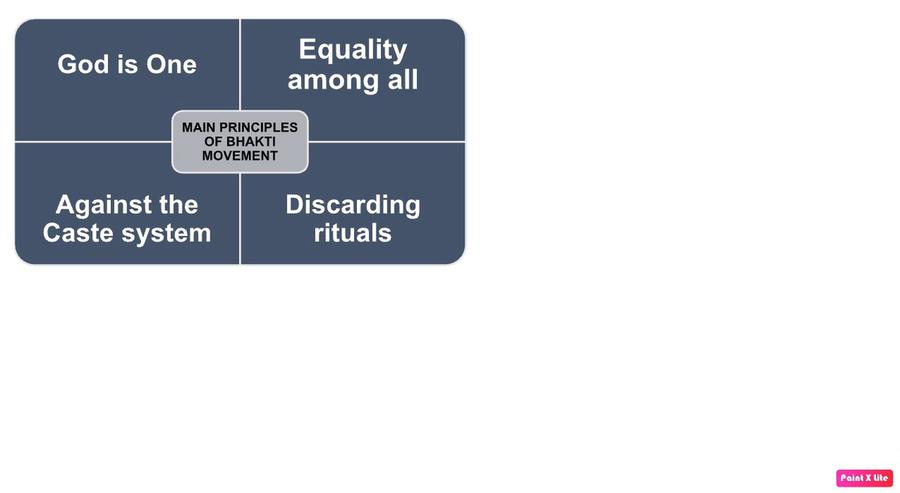Mains Daily Question
March 5, 2024
Q1. Discuss the ways in which the Bhakti movement expressed critiques of the caste system in India.(10M, 150W)
|
Approach to the answer: Understanding the structuring of the answer: The question has only one part. You need to talk about how Bhakti movement and Bhakti saints expressed their critique of the Bhakti movement. Introduction: Type 1: Provide a brief description of the Bhakti movement. Type 2: Give a brief evolution of Bhakti movement. Body: In the body, you need to talk about the ways various Bhakti saints gave the critique of the caste system. Conclusion: Type 1: Give the significance of Bhakti movement Type 2: Mention the impact of the changes brought about by the Bhakti movement on social structure |
Answer:
Bhakti movement started around the 7th century CE in Southern India. It refers to a devotional surrender to a personally conceived Supreme God. Though it expressed a critique of the caste system, only nirguna Bhakti saints like Kabir and Nanak criticised it with great intensity.
|
Bhakti movement expressed critiques of the caste system in India in the following ways: |
- Inclusivity in Worship: Bhakti saints and leaders emphasized that anyone, regardless of their birth, could attain salvation through devotion.
- For example, Kabir preached monotheism that appealed directly to the poor and assured them of their access to God without an intermediary who was a brahmin.
- Criticizing Rituals and Ceremonies: The Bhakti movement criticized the elaborate rituals and ceremonies associated with the caste system. Instead, they promoted a more direct and personal connection with God through devotion.
- Promotion of Social Equality: Bhakti saints actively worked towards breaking down social barriers by interacting with people from different castes, dining with them, and treating them as equals. This challenged the traditional norms of segregation and discrimination.
- For example, Nanak frequently travelled with Mardana, a lower-caste Mirasi (a community of dancers and singers).
- Literature and Poetry: Many Bhakti poets and saints expressed their critiques of the caste system through devotional literature and poetry. They used vernacular languages to compose their works, making them accessible to a wider audience.
- Tukaram was a rebel, Shudra by caste, he became a merchant. Later, defying the injunctions of the Brahmins, he chose to write on religious matters in Marathi, the language of the common people.
- Universal Access to God: Bhakti saints preached the idea that God was accessible to all individuals, irrespective of their caste or social status. They believed that one's devotion and sincerity were more important than their caste identity when it came to connecting with the divine.
- For example, Ravi Dass (1450-1520) was born into a family of leather workers (chamars) in Varanasi.
- Community Building: Bhakti communities often served as models of inclusivity and equality. They provided a space where individuals from different castes could come together to worship and discuss matters of spirituality, fostering a sense of belonging and unity beyond caste distinctions.
- For instance, Basavanna, in the 12th century, worked for ‘Kalyan Rajya’ (Welfare State) and established Anubhav Mantapa where spiritual seekers and philosophers gathered to discuss, promote, and live out the principles of devotion, social equality, and spiritual realization.
The Bhakti movement empowered the underbelly of Indian society in fundamental ways and also provided the required impetus for the growth of vernacular literature. Therefore, it tried to bring religious reforms by adopting the method of devotion to gain knowledge and achieve salvation.


